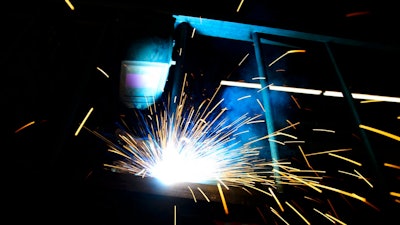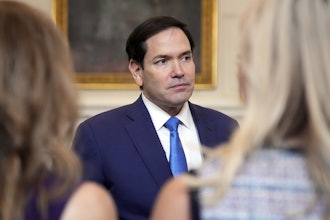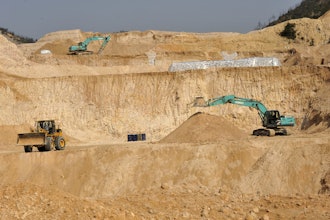
WASHINGTON (AP) — The Trump administration has chosen an odd time to offer special protection to the U.S. steel industry.
As President Donald Trump prepares to impose a 25 percent tax on imported steel, America's steelmakers are actually faring pretty well: The U.S. steel industry last year earned more than $2.8 billion, up from $714 million in 2016 and a loss in 2015, according to the Commerce Department. And the industry added more than 8,000 jobs between January 2017 and January 2018.
Even before Trump mentioned the tariff last Thursday, the price of the benchmark U.S.-made hot-rolled steel had reached the highest level since May 2011, according to S&P Global Platts. The price surged even higher on the tariff news.
"We finished 2017 in a good position. We look forward to 2018," U.S. Steel CEO David Burritt told industry analysts Feb. 1, according to a transcript at the website Seeking Alpha. He continued: "We're seeing increased demand from our customers and have rescheduled some projects to ensure that we can make enough steel to support our customers' needs."
Still, the steel companies complain they're victims of unfair foreign competition.
"The industry isn't doing as bad as their press releases say it is," says steel analyst Charles Bradford, president of Bradford Research. "Any time world economic growth is over 3 percent, the steel industry usually does OK." The International Monetary Fund says the global economy grew 3.7 percent last year and expects it to grow 3.9 percent in 2018.
The U.S. economy grew 2.3 percent last year, an improvement on 1.5 percent growth in 2016. Also raising demand for steel: Florida and Texas are rebuilding after last year's ruinous hurricanes.
Ned Hill, a professor at Ohio State University's John Glenn College of Public Affairs who studies economic development, says that after decades of cost-cutting and restructuring, American steel is "a vastly improved industry. It seems to me that they've established a competitive equilibrium."
In the 1980s, American steelmakers needed 10.1 man-hours to produce a ton of steel; now they need 1.5 man-hours, says Joe Innace of S&P Global Platts.
Most American steel is now made at super-efficient mini mills, which use electric arc furnaces to turn scrap metal into steel. (Traditional integrated steel mills make steel from scratch, feeding iron ore and coking coal into blast furnaces.) Some mini-mills need just 0.5 man-hours to produce a ton of steel, Innace says.
Increased productivity means today's steel mills don't need as many workers. Steel industry employment peaked at 650,000 in 1953. By the start of this year, U.S. steelmakers employed just 143,000.
The industry definitely faces long-term problems. Massive overproduction by China has flooded world markets with steel and kept world prices lower than they would have been. Some countries subsidize their steel producers and allow them to sell steel at unfairly low prices.
But the United States has already aggressively defended U.S. steel producers. As of mid-2017, the government was imposing 149 different restrictions on steel imports.
Steelmakers don't just face competition from foreign producers. They also vie against lighter materials — plastics and composites — that increasingly can be used in building construction and auto production, says Ohio State's Hill.
Most economists oppose Trump's proposed steel tariffs, along with his call for a 10 percent duty on imported aluminum. Taxing imported steel would help domestic steel producers, they concede, but it would drive up steel prices and put pressure on the far more numerous companies that consume steel, such as automakers and aircraft manufacturers.
The Trade Partnership, a consulting firm, says the tariffs would increase U.S. employment in the steel and aluminum sector by about 33,000 jobs but would cost 179,000 jobs in the rest of the economy.
A better option, Bradford says, would be increasing the gasoline tax to finance road, bridge and other public works projects that require lots of steel. The steelmakers "don't really need tariffs," he says. "What they do need is more infrastructure spending."






















